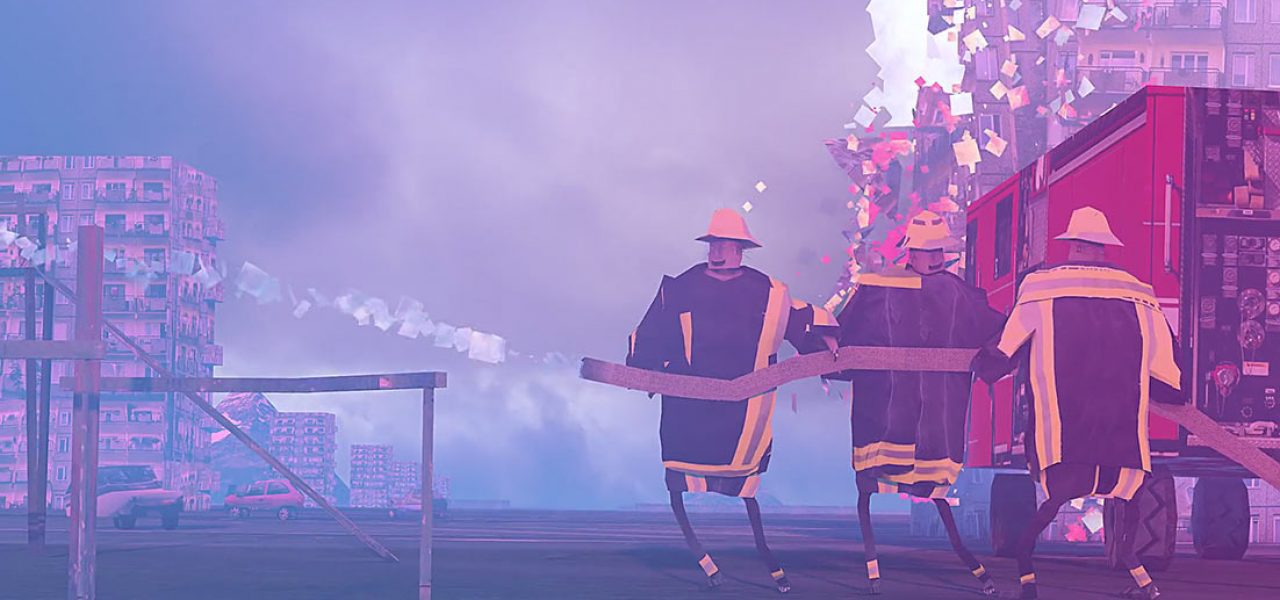
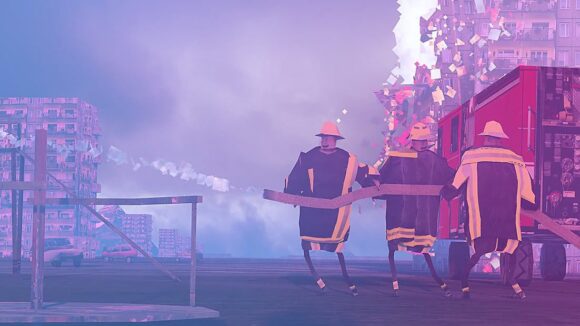
The Beautiful Side of ‘Ugly’: How A Film Embraced Errors And Happy Accidents In CG
Nikita Diakur’s short, Ugly, is called that for a reason. The experimental animated film, which follows a Native American Chief and a cat named Ugly, was made with deliberately ‘faulty’ dynamics.
That approach to simulation gave Ugly its characteristic look, and there were other errors and happy accidents that Germany-based Diakur took advantage of during production. The film will screen at Animafest Zagreb this June, after a successful Kickstarter campaign in 2015. [The film was also made with the support of the German Federal Film Board and Cartoon Brew.]
To find out more about exactly how Diakur made the film, we asked him how the ‘ugly’ treatment was arrived at from a technical point of view, what some of the more unusual approaches to animation involved, and how he got the best, er, worst errors and used them.
Does this kind of animation have a name?
It sure does, well, at least Diakur and his team called it something. “The first name that came to mind was ‘Ugly Dynamics,’ probably because we didn’t find anything better than the title of our film plus ‘dynamics,’ which is the definition for simulation in the 3d package,” Diakur said.
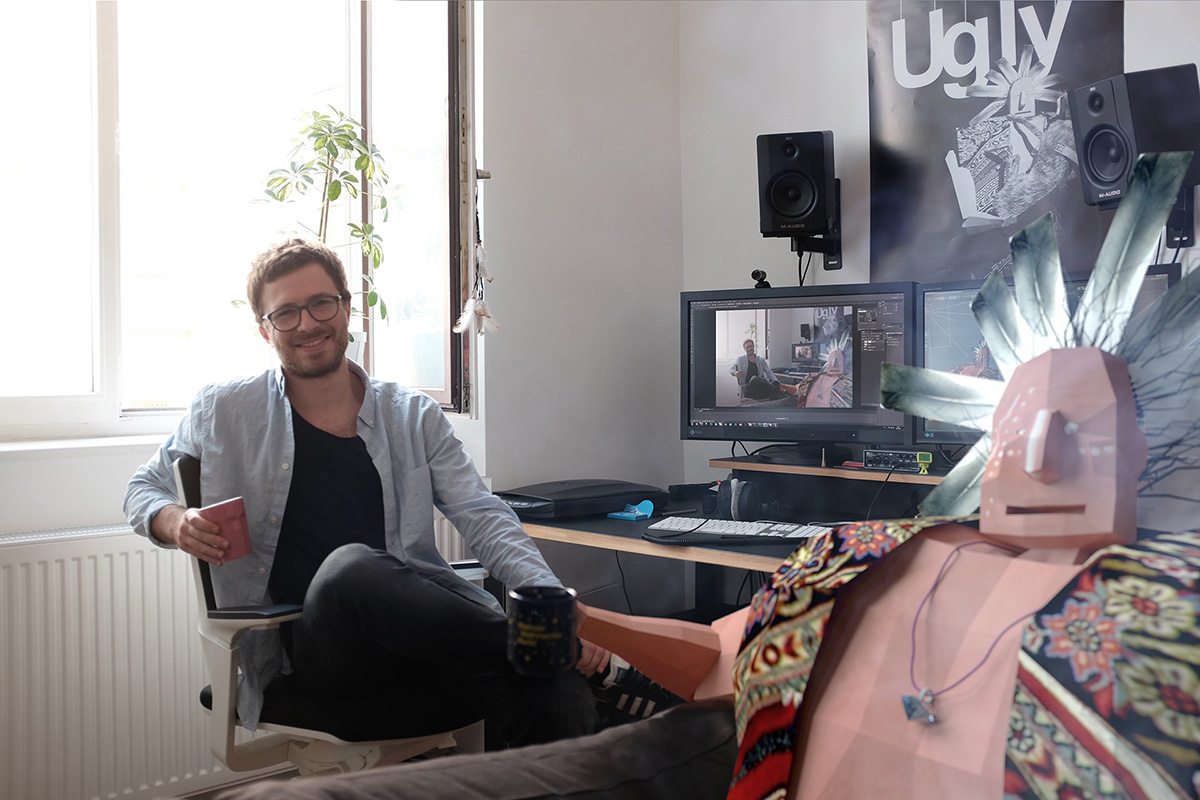
Added Diakur, “If you look at the outcome, Ugly Dynamics is actually a good fit, but I think the most appropriate name would be ‘Interactive Animation.’ There is an interaction between the animator and the animated objects or characters. It is like the characters really have a say in the outcome and the animator has to work with it. Similar to how a director has to work with actors on a live action film set.”
The ugly side of ‘Ugly Dynamics’ came about from technical defects – tuned into the software – in the simulation process. Cinema 4D was the chosen platform to make that happen. “It helped to get things done without forcing us to deal with unnecessary details,” said Diakur, who was also a beta tester for Cinema 4D’s manufacturer Maxon, during production.

Character dynamics
The Ugly characters are ragdolls. They were built with connected dynamic body parts that can collide with the environment. If a character is set up to be dynamic and a scene is played out, that character falls to the floor. Diakur and his collaborators jumped on this side of the simulation to try the typical ragdoll experiments, where a character might fall down a staircase, for example.
But contrary to what they had seen on YouTube, the tuned simulation engine in Cinema 4D resulted in their test character getting stuck in the middle of the stairs, at first trembling and then exploding into the air. “I felt that it was both realistic for a certain timeframe and broken for another, which pretty much suited our concept and story,” Diakur said.
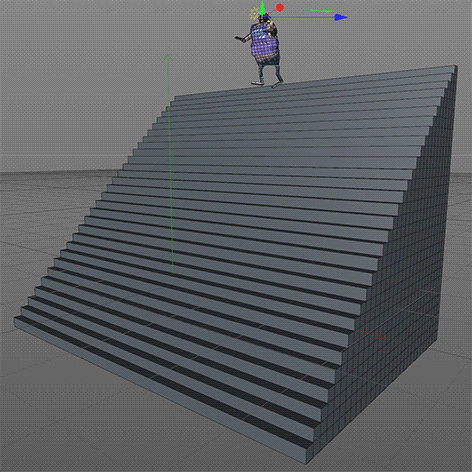
Still, the characters had to interact with other objects. So the team built controls that were effectively connected via simulated strings to the ragdoll body parts. Then, by keyframing or recording the movement of those controls, it was possible to simulate a particular action. “It took us a couple of months to get practical results, but it worked better and better the more we got used to it,” said Diakur.
Embracing errors
The unusual ragdoll animation was not the only whacked out part of Ugly’s final look and feel. That came also from the purposeful and imperfect approach to texturing and camera projections. Here, the camera projections were made to look normal from one angle but broken from another.

“Again,” said Diakur, “it fit the context and even saved us time. We took pictures of the environments and objects that needed to be built, and modeled everything from the exact angle that the picture was taken from. And then for particle dynamic effects like smoke, fire, and water, we used video textures.”
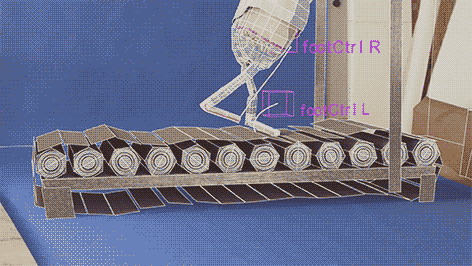
Errors or imagery that wasn’t quite right were a major part of the project. For example, Diakur made heavy use of lens flares, and even heavier use of glitches. A cloth glitch in a carousel scene came from an accidental error caused by the use of incorrect settings. But it’s in the film, and was later re-used in other scenes. Another sequence features a giraffe explosion that was partly accidental and partly deliberately executed. Once mastered, the same effect was used to break apart animals elsewhere.
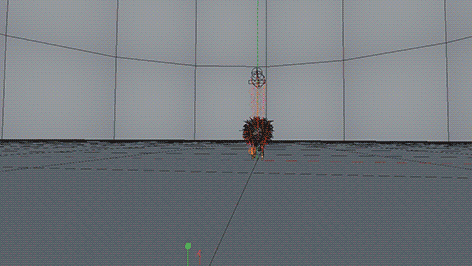
“And there was a hair bug in one particular Cinema 4D Beta version that I really liked,” added Diakur. “Maxon fixed it quickly, but I still have that version so that I can reproduce it, just in case.”
Losing control
During animation, the team hooked up Sony Playstation 2 controllers to manipulate some of the vehicles, notably the car and drone seen in the film. But they found they could also rely on the PS2 controllers for more complicated setups such as a tornado, which is accompanied by flying leaves and a plastic bag.
“It is a bit difficult to use just the mouse, as there are too many settings that need to be adjusted quickly,” Diakur explained. “A game controller is perfect for this. You can interact with the simulation in realtime. We are also planning to hook up two controllers to the drone, one for the pilot, one for the camera operator. By doing that, you could have two animators flying a simulated camera drone.”
Scene case study: the cat chase
At one point, Ugly the cat is chased down by three dogs while the feline is attached to a car by rope. Diakur soon realized that this would be a complicated setup with many unpredictable variables. In fact, he said, “the computer calculation here was so complex that the shot could play out totally different with every single take.”

As initially storyboarded, the chase included a shot of the rope ripping, with the cat flying through the air and the dogs colliding into him. But after simulating this event several times, the results were always different and the dogs never quite collided as hoped (since Ugly would always land at a different spot).
“We tried to increase the collision chances by creating about 50 dogs and spreading them out in space,” said Diakur, “hoping that one or two would collide and we could just delete the rest. But we still had no luck. So similarly as with our first experiments, we had to focus on those parts that worked, thus simulating the scene in separate shots and cutting it together into one sequence. As a by-product, we’ve produced a ton of behind the scenes footage that didn’t make it into the final film.”
Thus is the charm of Ugly, a film that seems spontaneous (it is), and warrants several viewings for pieces of action you may have missed while its crazy action unfolds.
You can find out more about Ugly on the official website or its Facebook page.
